The best accounting software for most small businesses is QuickBooks. Every accountant knows how it works and it’ll scale with your business.
If you plan to stay small and do most of the bookkeeping yourself, I strongly prefer Xero.
The 5 Best Accounting Software Solutions
- QuickBooks – Best overall business accounting software, the default choice
- Xero – Best for solopreneurs and my personal favorite
- FreshBooks – Best for agencies and best bundle
- Wave – Best free accounting software
- NetSuite Accounting – Best for large businesses
Read on for in-depth reviews including the pricing, pros, and cons of each tool on my list. Use this as a guide for comparing your options.
QuickBooks – Best Overall Business Accounting Software
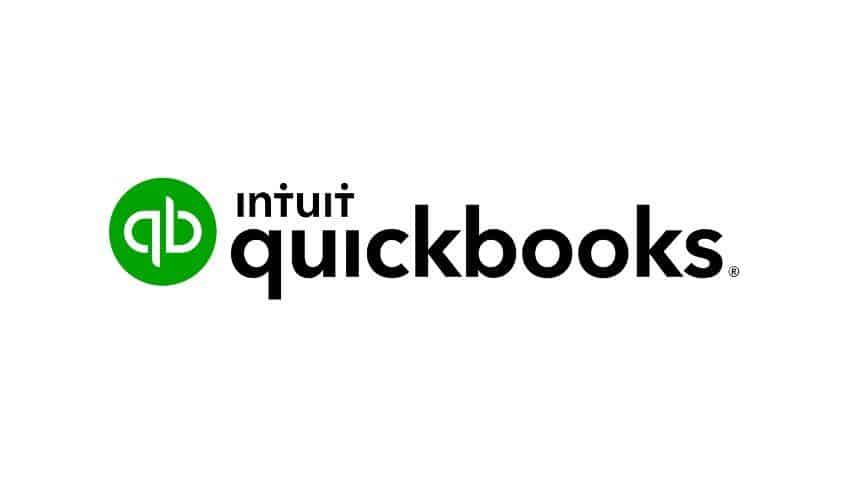
QuickBooks is an incredibly popular accounting solution — for good reason.
Look, I don’t know anyone that LOVES Quickbooks. No one looks forward to logging into it.
But that doesn’t really matter. QuickBooks gets the job done and gets it done right. It’s not designed for a small business owner that’s personally doing the bookkeeping. It’s designed for businesses that need to have their bookkeeping done correctly.
We’re a perfect example at our company. The accounting and bookkeeping for our business is way more complicated than a typical business of our size. We run multiple websites and have revenue share agreements with multiple entities. We also need to keep track of our bookings and chase down payments. QuickBooks keeps up with all our stuff, no issues.
Also, every accountant on earth has used it. No matter who you hire or which CPA you work with, they’ll instantly know their way around. It’s the industry standard.
Do I personally like other accounting software more than QuickBooks? Yes. If I started a new business today and was serious about it, would I use QuickBooks? Also yes.
Quickbooks might not be my favorite but I can completely depend on it. It’s the default choice.
QuickBooks does offer a bundle of stuff like POS, time tracking, and payroll. To be honest, if you’re large enough to use QuickBooks, you’re large enough to have dedicated tools for that other stuff.
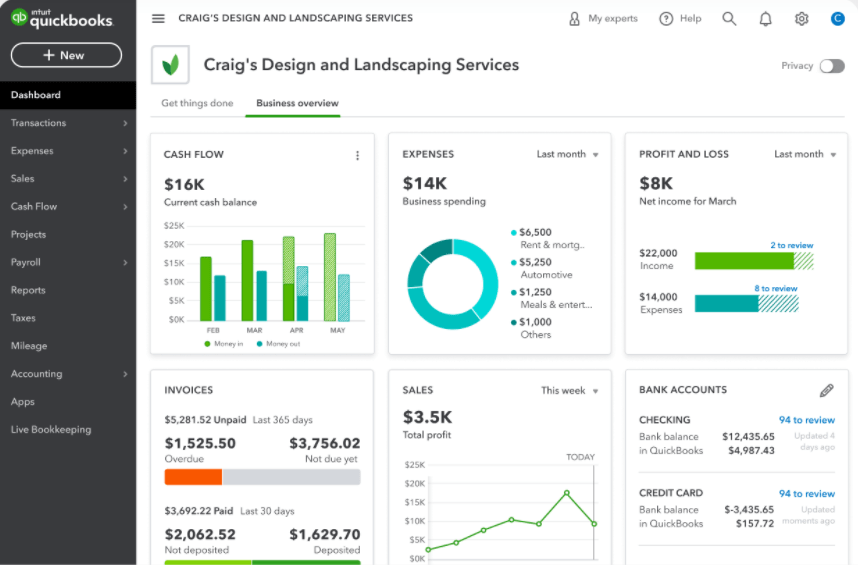
Like most accounting services, you can easily sync QuickBooks with your bank. The software will automatically import and categorize transactions accordingly.
Here’s an overview of plans and pricing for QuickBooks Online:
- Simple Start — $15 per month
- Essentials — $30 per month
- Plus — $45 per month
- Advanced — $100 per month
The basic plan will get you everything that you need to manage the bookkeeping and accounting for your business. But these things will force you to upgrade:
- More users, the basic plan limits you to only 1 user. And the Essentials limits you to 3. It’s not hard to share a single login with multiple people on your team though. You would have to upgrade if you want to share your books with your CPA.
- Multiple currencies.
- Integrations with multiple payment platforms (Amazon, Square, etc).
- Inventory management.
- Other advanced features that full-time accountants would need.
You can try QuickBooks free for 30 days or get 50% off your first three months. Since there are no long-term contracts or commitments, you can cancel or switch plans at any time.
Unfortunately, you can’t try the software for free and get the discount off of your first three months. You’re forced to choose between the two options.
Xero – Best for Solopreneurs and My Personal Favorite
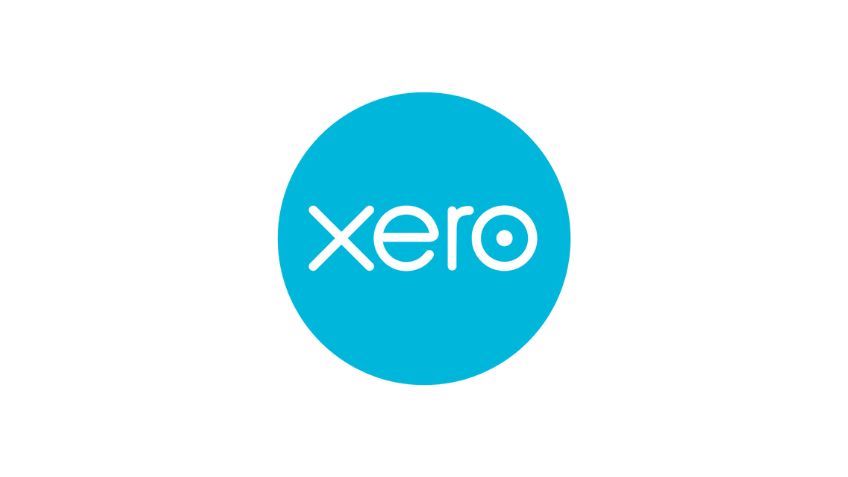
Xero does a great job of simplifying the accounting process for small business owners.
For about a decade, I ran a growth consulting business on the side while working a full-time job. During some years, I even generated six figures. I had a bunch of expenses to manage and needed to track everything in order to handle my taxes.
Xero saved me a ton of time and I kept using them until I shut that business down.
Here’s how my workflow worked with Xero:
- Once every few months, I’d log in to reconcile all my transactions.
- From the integrations with my back accounts, Xero had automatically pulled in every transaction.
- Xero gave me a list of transactions to review, I started at the top and classified each one.
- For repeat transactions, Xero started recommending expense categories for me. So all I had to do was approve it.
- During tax season, I pulled up my profit and loss report which took a few clicks.
All in, I spent 5 hours per year managing my books. No bookkeeper either. It was that easy.
Xero has just three plans for you to choose from:
Early — $15 per month
- Ability to send 20 invoices
- Ability to enter 5 bills
- Reconcile unlimited transactions
Growing — $42 per month
- Unlimited invoices
- Unlimited bills
- Bulk bank reconciliations
Established — $78 per month
- Multi-currency compatibility
- Capture and manage expenses
- Track project times and cost
Watch out for their discount pricing, most of the accounting tools are doing tricky discounts these days. For example, Xero lists the Early plan at $1.50/month but that’s only for the first 3 months. Then you’ll be paying $15/month after that.
There a few things that have bothered me about Xero:
- They’ve increased their pricing a lot over the years. Recently, their plans have doubled in price. And I used to be able to get a super cheap plan with a limited number of reconciliations per month. Hopefully they don’t keep pushing the price any further. If they do, I might check out some of the other options.
- I never liked their invoicing feature. I like well-designed invoices with built-in payment features. Xero never put much effort here so I never migrated my invoicing over.
- Two years ago, they had some integration issues with one of my banks and the automatic import stopped working. I’ve had to export my bank transactions into a CSV file, modify it, then upload it manually. It’s a real pain. And the bank integration still isn’t working.
Even though I really like Xero overall, I’d probably try out the other options on this list to see if any of their bank integrations work flawlessly for me. But if all of your banks integrate with Xero, I’d definitely go with them.
FreshBooks – Best for Agencies and Best Bundle
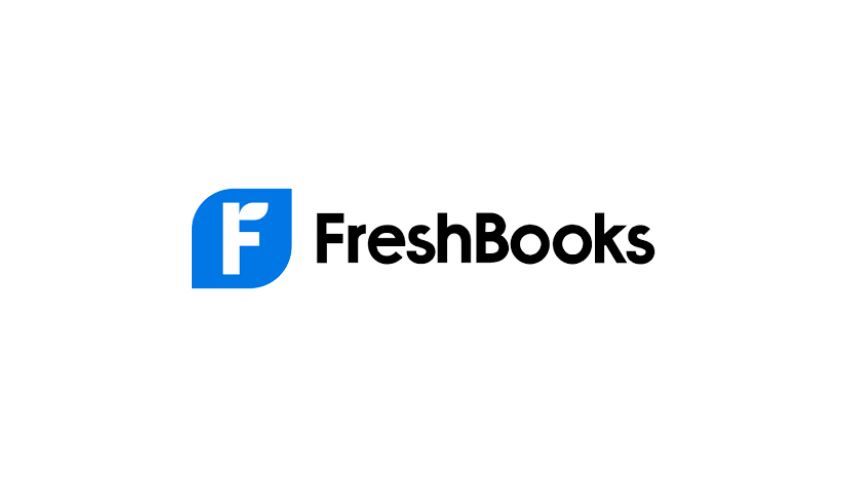
FreshBooks really shines in two areas:
- The UI is very easy to use. When you log in, everything makes sense.
- It’s got the complete bundle that you need to run an agency or service-based business. Invoicing, payments, and time tracking, it all works seamlessly.
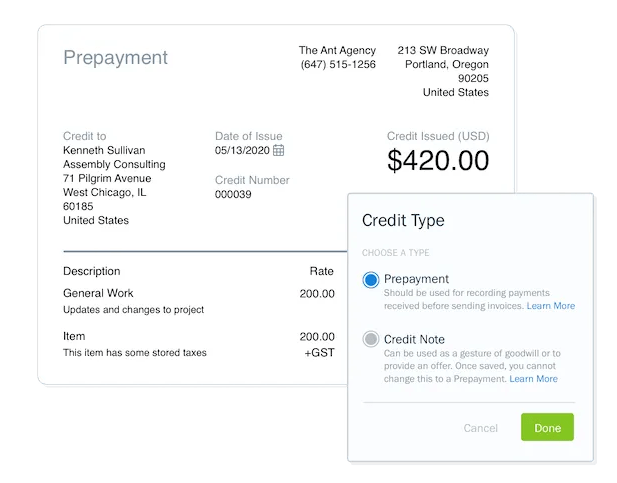
If I was building an agency, I’d jump on FreshBooks without a second thought.
Also, every client-facing part of their app looks great. For any reporting or invoice that you send a client, the design is top-tier. You’ll look professional, even if it’s just you running the entire business.
Here’s a quick overview of FreshBooks pricing:
- Lite — $19 per month
- Plus — $33 per month
- Premium — $60 per month
- Select — Custom pricing
When you visit their pricing page, the initial prices you see will have a discount for the first 4 months. The prices above are the real pricing that you’ll pay once the discount period has ended.
The Lite, Plus, and Premium plans come with 5, 50, and 500 billable clients, respectively. So you can choose your plan based on the size of your client list. It’s an extra $10 per month for each team member that has access to the software.
You can sign up for a free trial to see if the UI is a good fit for you.
Wave – Best Free Accounting Software
Wave is a free accounting solution. That’s right—free. There are no setup fees, hidden costs, or monthly charges.
But the plan is pretty limited.
Here’s what you WON’T get on the free plan:
- Automatically import bank transactions. This is a deal-breaker for me personally.
- Automatically reconcile transactions. Another deal-breaker. I’d gladly pay $15/month so I can fly through my bookkeeping.
There’s a few other limitations but those are the big ones.
If you run a freelancing business, love the UI of Wave, send a few invoices per month, and have basically no bookkeeping for your business, then the free plan could be a good fit.
Their Pro plan does start at $16/month which is very standard for the industry. At that point, you get all the same stuff as everyone else: bank integrations, invoicing, accepting payments, etc. So if you ever need to upgrade when your business gets some momentum, that’s easy to do.
If you check out their pricing, you’ll also see a differencing in their payment processing fees:
- Stater (Free) Plan = credit card processing is 2.9% plus $0.60 per transaction
- Pro ($15/month) Plan = credit card processing is 2.9% plus $0 per transaction for the first 10 transactions in a month, then $0.60 per transaction after that
So the Pro plan saves you up to $6/month on payment processing fees. That’s pretty minimal savings, definitely not worth upgrading or going with Wave just because of this.
NetSuite Accounting – Best For Large Businesses

If your business keeps growing, you will reach a point that QuickBooks buckles from the complexity.
I haven’t been through this personally but our Director of Finance has. On multiple occasions in his career, he had to navigate a complete overhaul of the accounting system and migrate off QuickBooks.
The good news is that by the time you reach this point, you’ll have an entire team that can research all the options and help navigate you through the transition.
There are a bunch of enterprise accounting tools but the main one is NetSuite. Most accounting tool bake-offs will have them in the running. They’re a massive company that was bought by Oracle. They also have very built-out CRM, field service, analytics, and other business operations software. They serve major enterprises that are trying to centralize everything.
If NetSuite is right for you, you’ll already know it. For everyone else, I’d stick to our other recommendations.
How to Find The Best Accounting Software for Small Businesses
When you’re looking for accounting software, I recommend paying attention to these key factors.
Company Stage and Type
Your company type will basically force you into 3 options:
- If you’re a small company, doing a lot of the accounting yourself, and plan to keep it that way for a LONG time, choose one of the friendly accounting tools. They all work great so choose the one with the UI that makes the most sense to you. Xero, Freshbooks, and Wave are all solid options.
- If you’re building a business with growth in mind and want to have a bunch of employees, get QuickBooks. Another way to think about it: if your plan entails hiring a full-time person in a finance/accounting role within the next few years, go with the default option which is QuickBooks. No sense in migrating your accounting, get it done right from the start.
- Once you’re a massive company, you can explore enterprise options like NetSuite. By then, you’ll have teams of people to research all the options, test things out, negotiate multi-year six-figure contracts, and deal with the year-long migration. If you’re already at this stage, ask your finance team what they want to do. It’s ultimately up to them.
Even though there’s tons of options, the choices are pretty straightforward if you use these rules.
Bank Integrations
By this point, I’d expect every accounting tool to have a flawless bank integration with every single US bank. And major international banks.
But that’s not the case in my experience. Accounting tools have most banks, but not quite all of them.
And for me, if a tool doesn’t have an integration, that’s a dealbreaker for me. This is the reason why I’d probably check out other tools even though I’ve been really happy with Xero. They don’t have an integration with one of my banks which means more manual work for me. And the whole point of an accounting tool is to automate all that stuff.
Automated Reconciliation
If you’re new to bookkeeping, every bank transaction needs to be reconciled. That just means to properly categorize the transaction so it shows up in the right place in your accounting reports, like your profit and loss statement.
Manually reviewing EVERY transaction and selecting expense categories by hand takes a ton of time. Especially since a bunch of transactions are just repeat transactions from the previous month or year.
When I first started using an automated reconciliation system, it was a game changer. Instead of spending a few hours per month on bookkeeping, it only took me a few hours per year. My accounting tool looks at every transaction and then suggests a reconciliation based on previous reconciliations that I’ve done. If it looks good, I click and approve. If not, I make a quick edit and finalize it.
This is the main feature that I would be evaluating on any new accounting software. Especially as a busy entrepreneur with a ton of stuff going on.
Things to watch out for:
- Does the automated reconciliation properly categorize transfers between accounts?
- Does it accurately connect transactions to the right invoice?
- Does it correctly categorize expenses 80% of the time or better?
If your system does all the above, you’ll be able to skip hiring a bookkeeper for a long time. That’ll save your business a ton of money.
High Quality Bundled Features
The smaller you are, the more important this is.
When I started my consulting over a decade ago, you’d have to sign up for 3-4 tools to manage your business:
- An accounting tool
- Time tracking
- Invoicing
- Payment processing
And then hope you could stitch them altogether.
These days, every great accounting tool has them all bundled. And most of them are pretty good. QuickBooks, for instance, didn’t have a good invoicing feature when I started. Now it’s top-tier.
But they’re not all perfect. Depending on exactly how you run your business, different tools might not have the specific time tracking or invoicing tools you need.
So play around with each and make sure the core features are good enough for you. I don’t like Xero’s invoicing at all which is why I had a separate invoicing tool alongside it. If I wanted to combine tools, I’d check out the other recommendations.
Interface that Makes Sense to You
Oddly enough, this might be the most important item.
Thinking like an accountant can be really hard for the first time. Credits and debits, double entry accounting, accrual based accounting, the endless reports, it’s a LOT.
The real value that the small business accounting tools provide is to simplify all that stuff with their UI so it makes sense to a normal person.
This is also why a lot of people hate QuickBooks. It’s the purest of the accounting tools and does the least to simplify how accounting works. People’s dislike of QuickBooks isn’t really about QuickBooks, it’s that accounting is a lot to get your head around. At least it was for me.
As I’ve bounced between different accounting tools over the years. I’ve stuck with the ones that made the most sense to me. I logged in, started doing some bookkeeping, and it all just worked. I highly recommend that you play around with a few of the popular tools, then pick the one that makes the most sense to you personally. That might be a different tool than the one I’d pick. And that’s okay! Different products will organize things in different ways, find the one that makes sense to you.
